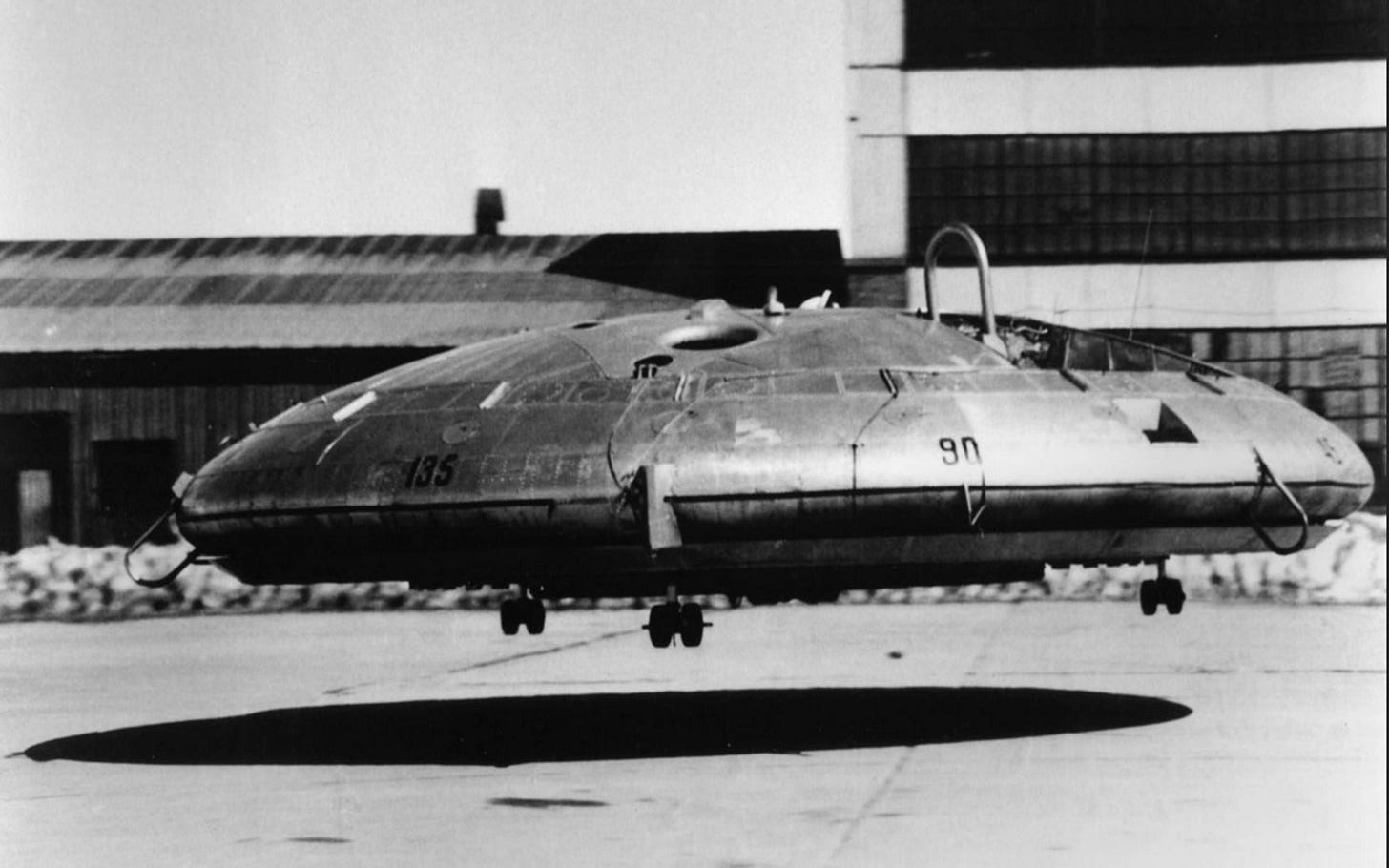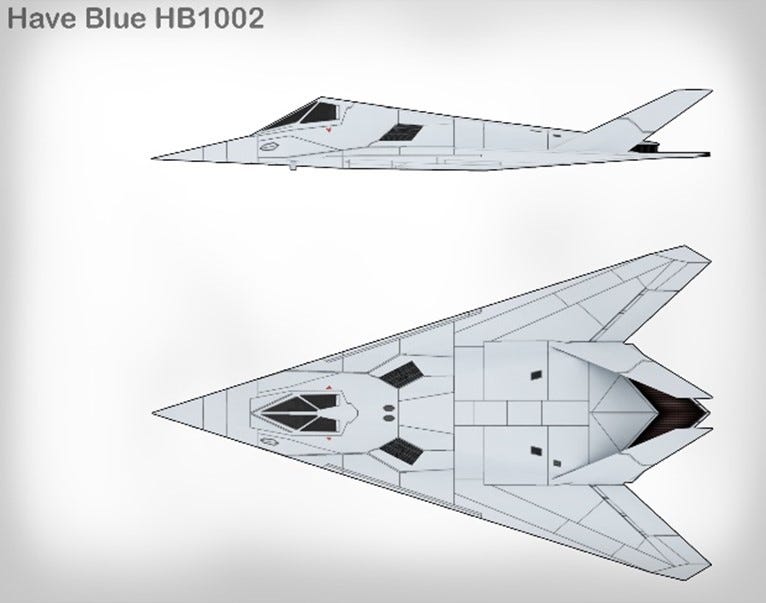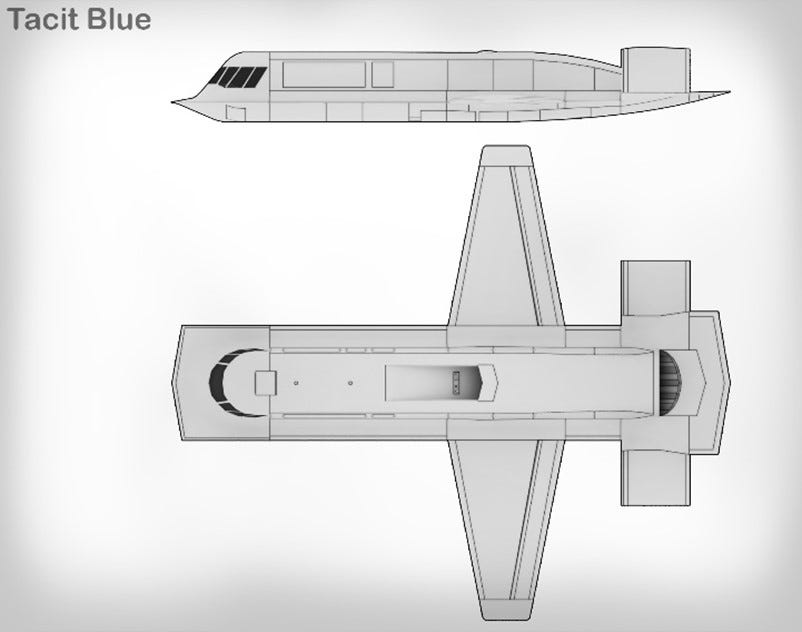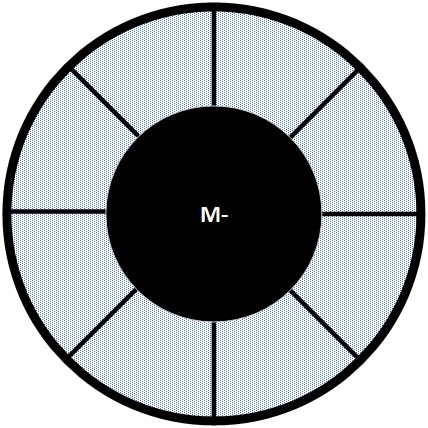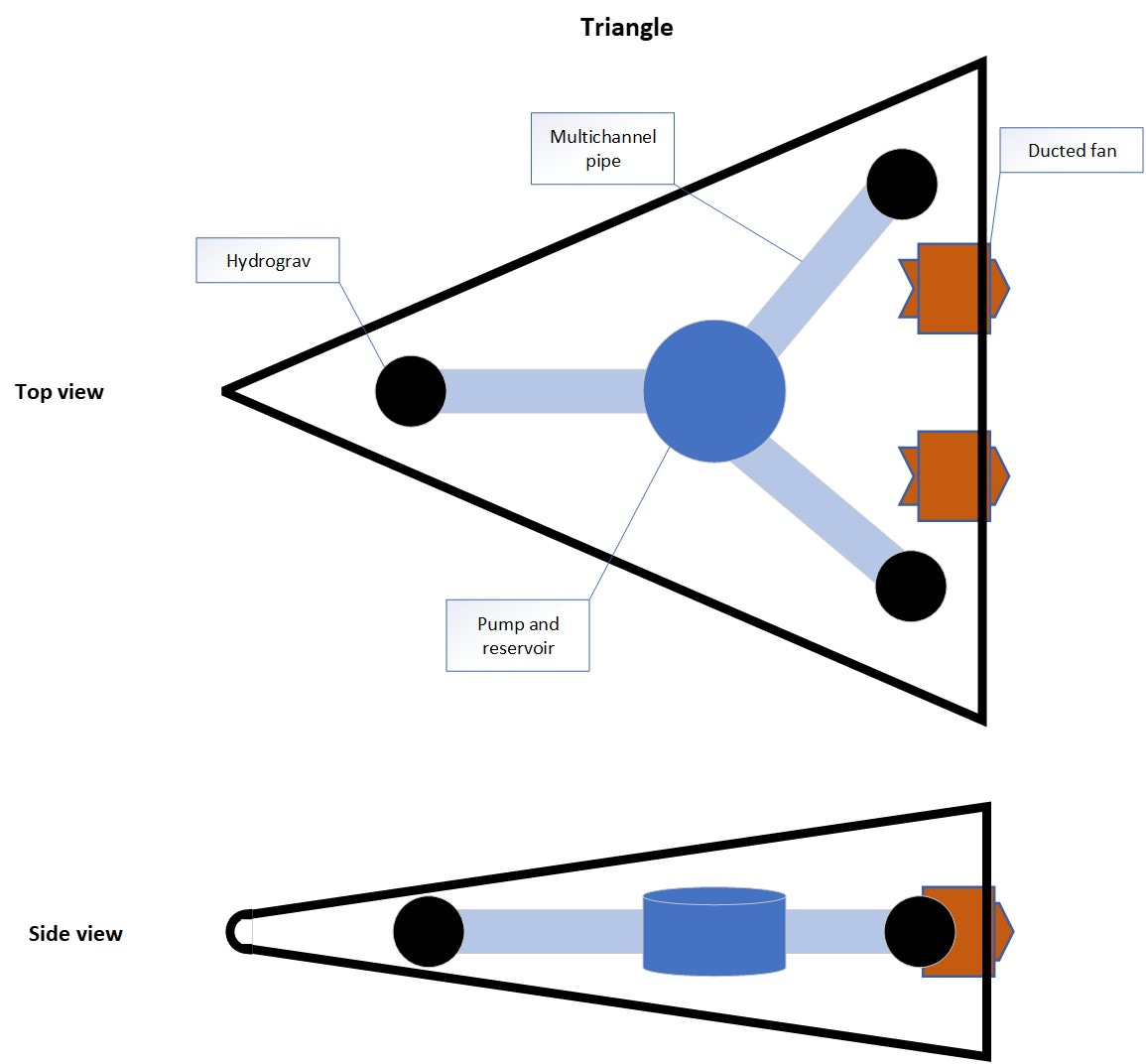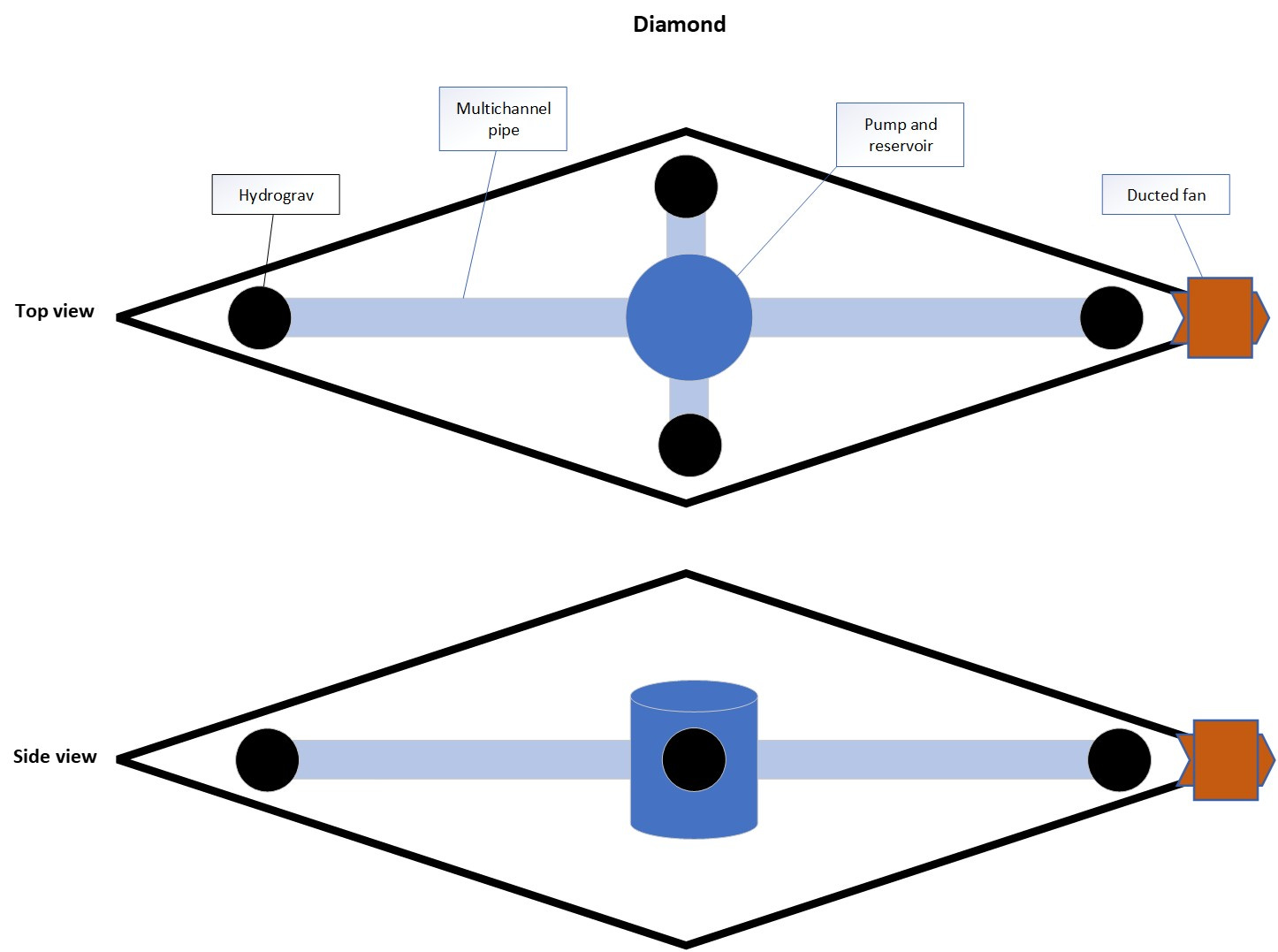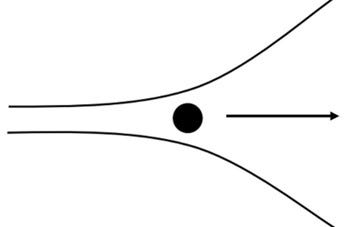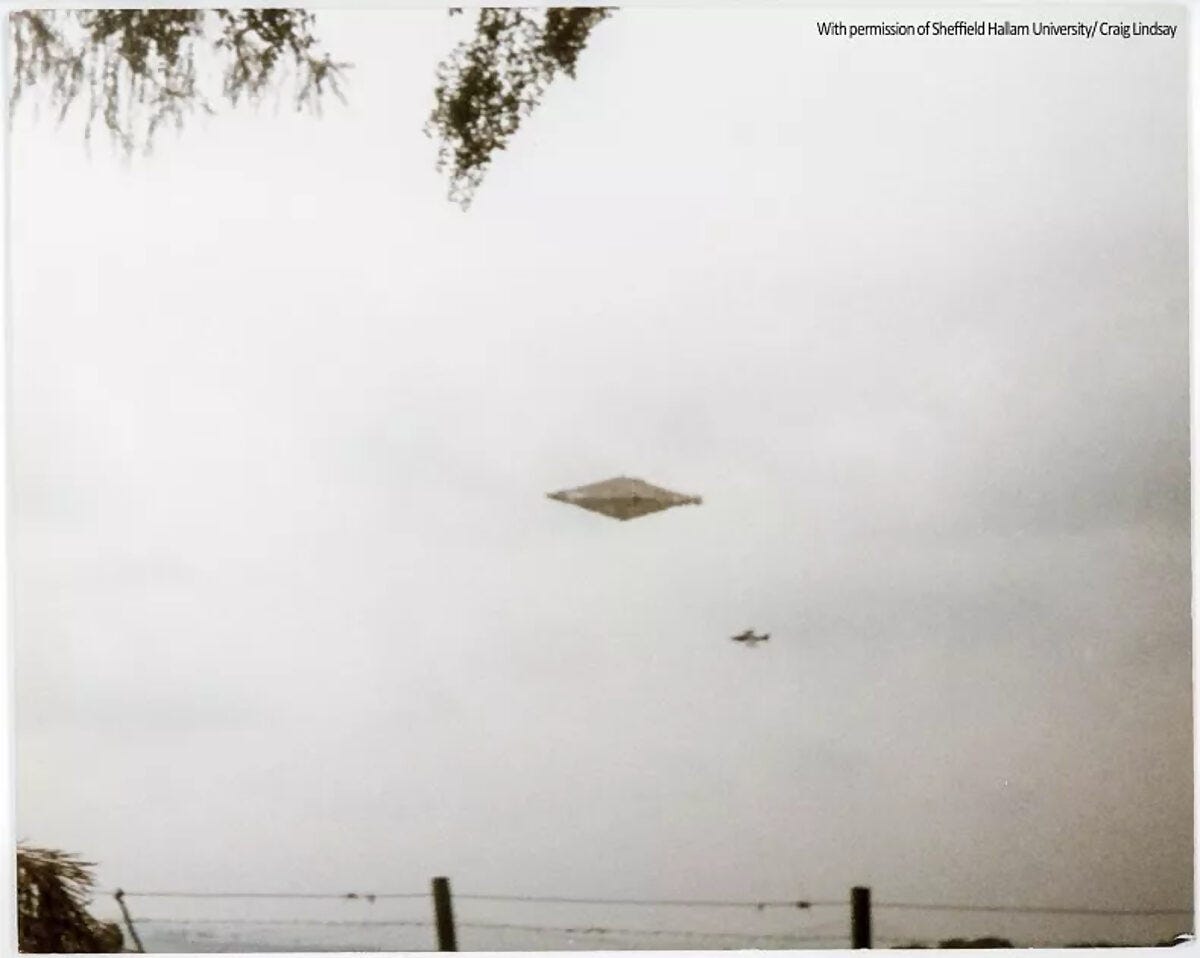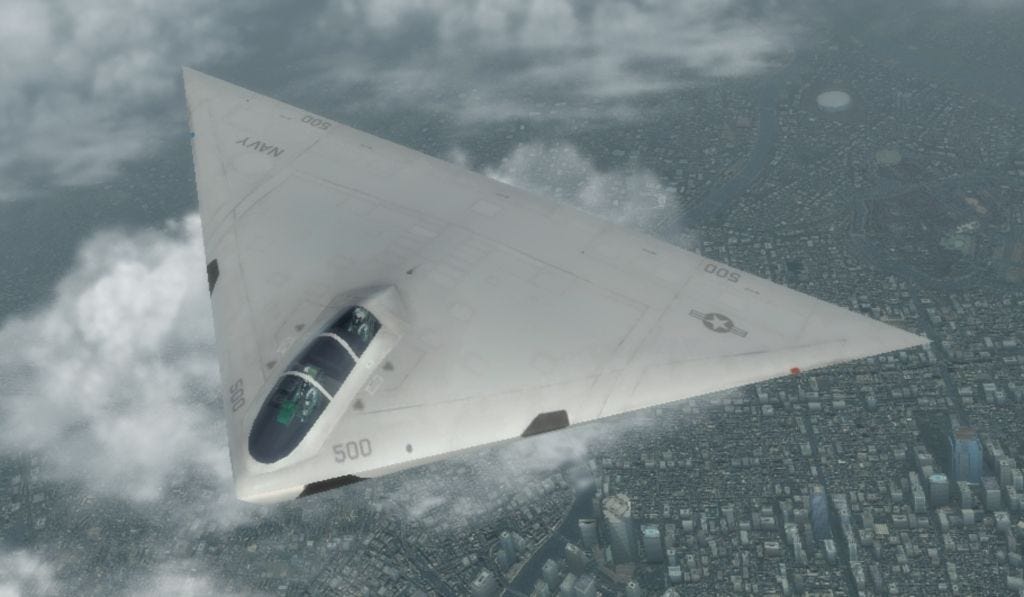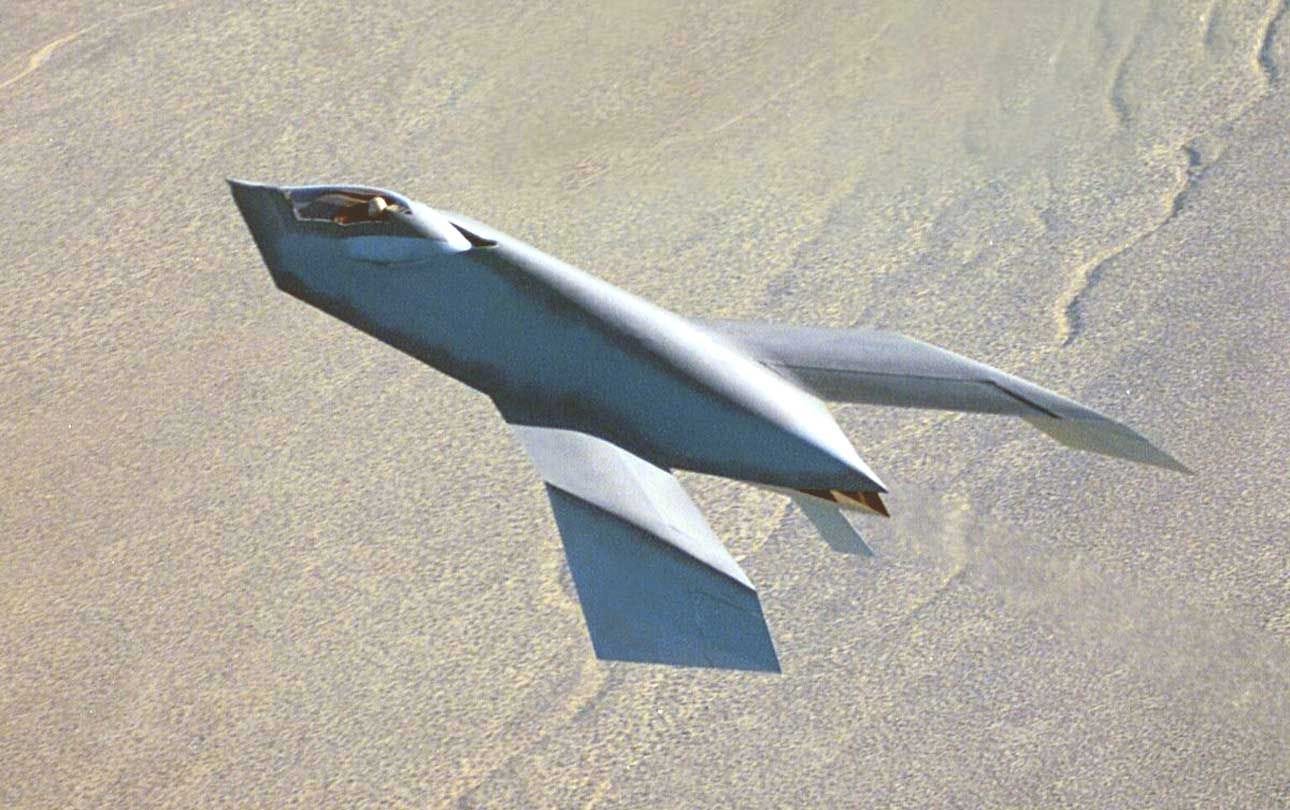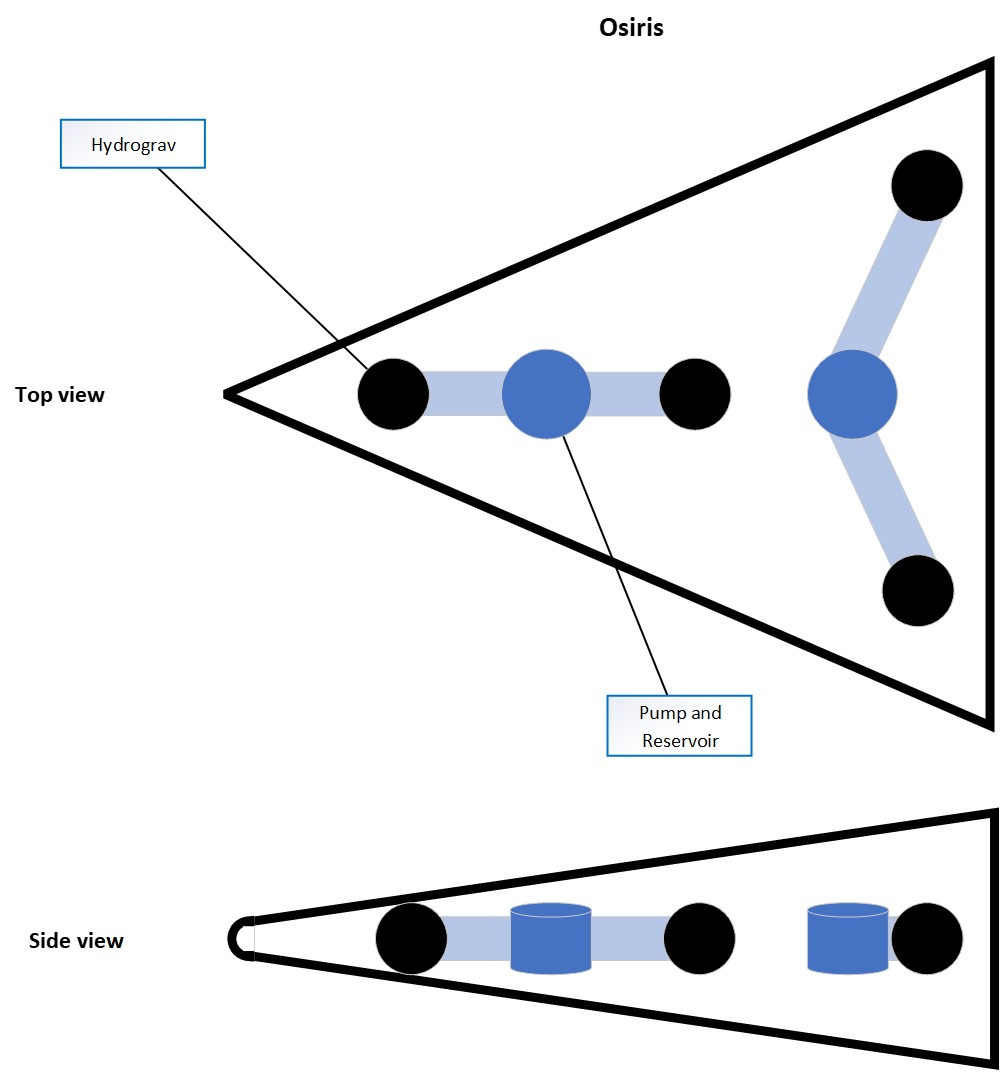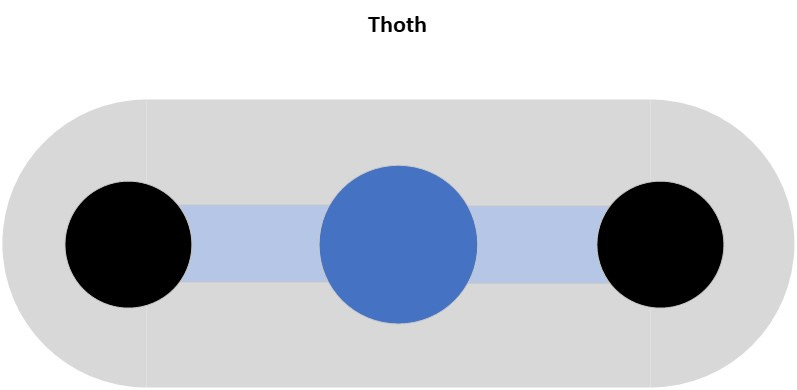A Conceptual View of a UAP Reverse Engineering Program
The purpose of this article is to provide insight into how a hypothetical UAP recovery and reverse engineering program that began in the late 1940’s would have evolved over the last 75 years. I will use history and my knowledge of the aerospace industry and its biggest customer, the Department of Defense, to infer and inform the progression of such a program over time. What different evolutions would it have gone through and why? How would it operate today? Could reverse engineered technology be flying now? That’s the speculative journey this article will attempt to undertake. Please note that the article is a blend of speculation and historical events. It is meant to be fictional and used as an example of how such a program could have evolved. The project names are imagined and the companies and technologies mentioned are educated guesses and examples based on historical events.
Origins
The start of the project after World War II was a result of the discovery of crashed unknown vehicles, including the purported Italian craft, Roswell, and others. The vehicles were extremely advanced and their origin was unknown but theorized to be extraterrestrial. There were serious concerns by the intelligence community and the top levels of the Truman administration that if the existence of these vehicles became public, it could create mass panic, and even lead to war. The vehicles were transported to Wright Field, the location where all the recovered German aircraft were stored including the Messerschmitt 262 jet fighter, as the administration weighed its options.
Their initial decision was to take the path of least resistance. The existing Manhattan Project already had a management structure, top scientists, facilities and laboratory infrastructure, and strong classification and secrecy protocols. If it was good enough for the atomic bomb, it should be good enough for these unknown vehicles. Plus, the heavy lifting to design the original fission bomb was now complete and many of the scientists had time to explore the vehicles while also working on the design for the future fusion bombs.
Evolution 1: Soviet Spies and a Security Clampdown (1947-1950)
Everything changed after the Soviet Union detonated its first atomic bomb in 1949. Julius and Ethel Rosenberg were convicted of espionage in 1951 for passing many technical secrets to the Soviets, including plans for the atomic bomb. They had managed to infiltrate the Manhattan Project in the early 1940’s by recruiting Ethel’s brother, who worked at Los Alamos National Laboratory, as well as an engineer at Oak Ridge National Laboratory who specialized in manufacturing weapons-grade uranium.
The realization that the Manhattan Project had been compromised must have come as a shock to the administration and the national security apparatus. The country’s most secret program had been breached and its potential doomsday technology had been passed to the Soviet Union, accelerating their development of the bomb. And now the administration and the highest echelons of the defense and intelligence communities were sitting on a secret far more important than the atomic bomb. The knowledge that the US was in possession of highly advanced and possibly extraterrestrial craft could not fall into Soviet hands like the atomic bomb designs. A nuclear war with the Soviet Union was an existential threat to the US, and the technology in the recovered vehicles might provide an edge in battle. Draconian measures had to be taken to keep the secret at all costs.
The program was hastily pulled out of the compromised Manhattan Project and placed under a new entity, Project Whorl. Some of the scientists and engineers from the Manhattan Project were assigned to Whorl after signing new NDA’s. The remainder were debriefed and asked to sign NDA’s pledging to never speak of the program again. A dozen individuals were designated by the administration to function as a Board of Trustees and oversee the program. These individuals, the majority of whom were senior leaders in the defense and intelligence community, were given lifetime appointments but could resign under duress and be replaced by another administration appointee. Only the dozen Trustees would know the full extent of the program and the results of the research. They reported to no one but President Truman on this matter and were not obligated to give him periodic briefings to limit exposure in the White House, where there could be leaks. And they would maintain their current positions of leadership at the Pentagon and intelligence agencies to continue to have access to those resources and suppress any leaks.
The Trustees implemented a security apparatus for Whorl more complicated than a Rube Goldberg device. They began by reclassifying all aspects of the technology using the Atomic Energy Commissions’ clearance levels for nuclear explosives, a level of classification that most defense department and intelligence community personnel did not possess. They then implemented levels of compartmentalization never seen before. Every aspect of the program was divided into small components, and every component had its own special access list of individuals cleared to work on it. The Trustees personally vetted and approved all special access lists. A select few of the top scientists were cleared for more than one special access list but only the Trustees had access to all. They understood this system would severely limit the research progress, but the security of the project was paramount.
The Trustees also needed to find a funding source for Whorl outside the Manhattan Project. They proposed that the Truman administration increase funding for basic research and transfer the money to Whorl through shell companies and other tricks of the trade. With new management, personnel, operating procedures, security protocols, and secure funding, Project Whorl was ready to embark on the most ambitious undertaking in human history.
Evolution 2: Early Years (1951-1962)
Organization and Operations:
During the early years, Whorl was organized under three directorates: Hardware, commonly referred to as nuts and bolts; Organics; and Intelligence.
The Hardware Directorate was responsible for all the physical parts of the craft, including the structure, materials, electronics, power generation, and propulsion, as long as those components were not made of organic material. All partial or fully recovered vehicles were taken to Wright Field, which was eventually renamed Wright-Patterson Air Force Base. Fully intact craft were kept there for attempts at flight testing, and later also at Area 51 after the Atomic Energy Commission acquired the land in the mid 1950’s and added it to the Nevada Test Site. Partial or damaged vehicles were disassembled and their components sent to the special access programs that dealt with the specific technology. The majority of the work occurred at Wright-Patterson, Area 51 (after 1955), and the three big national laboratories, Los Alamos, Lawrence Livermore, and Sandia.
Private industry was also involved on a smaller scale. Nearly all the electronic components were passed on to Bell Laboratories, who had the most expertise of anyone in the world at the time. They were tasked with reverse engineering the components and finding military and civilian applications. And one of the intact craft, a cigar-shaped object that confounded the scientists at Wright-Patterson, was transferred to the Ramo-Wooldridge Corporation, which became TRW after merging with Thompson Products in 1958. Ramo-Woolridge was formed in 1953 by Simon Ramo (dual PhD’s in Physics and Electrical Engineering from CalTech) and Dean Woolridge (PhD in Physics from CalTech and classmate of Ramo), both veterans from Hughes Aircraft. Soon after the company was founded, it became the lead contractor for the Atlas intercontinental ballistic missile, outcompeting all established defense contractors. Ramo-Woolridge was tasked by Project Whorl to explore and reverse engineer the propulsion concepts of the cylindrical object, which unlike the disks and the crescents, had no way of creating aerodynamic lift. Perhaps there were potential applications for missile design.
To compartmentalize the technologies, Ramo-Woolridge created a division called Space Technology Laboratories (STL) to explore the disk and other advanced concepts. In 1959, several established defense contractors complained to Congress that TRW had unfair access to advanced technology that the rest of the contractors did not have. Congress then recommended that STL be converted to a non-profit organization. And in 1960, The Aerospace Corporation was spun-off from TRW as an independent non-profit with nearly half of STL’s employees and an intact flying cigar.
The Organics Directorate was responsible for all biological components, ranging from occupant remains to organic systems and materials. Occupant remains were studied at Wright-Patterson and Area 51 (after 1955), and some organic systems and materials were sent to the three national laboratories, depending on the component types.
The Intelligence Directorate had both intelligence and counterintelligence duties. The intelligence side worked with the general intelligence community to collect and analyze UAP sightings and encounters, as well as find crashed vehicles. The counterintelligence component then worked with other partners such as the Air Force’s UFO project offices, including Projects Sign, Grudge, and Blue Book, as well as the Condon Committee, to suppress the information from the public.
In addition to the directorates, the project also became tightly integrated with a subset of the Air Technical Intelligence Center (ATIC), which was renamed the Foreign Technology Division in 1961 and was also housed at Wright-Patterson. ATIC and its major subcontractor, Batelle Memorial Institute, were responsible for the retrieval and analysis of Soviet technology, including aircraft, satellites, and ICBM’s. The subset of ATIC that Whorl was tightly integrated with had expertise in retrieving the anomalous craft that Whorl sought. This part of ATIC partnered with intelligence agencies and privately funded paramilitary units to retrieve craft from remote locations and even behind enemy lines.
Progress:
Much progress was accomplished with electronics. The scientists at Bell Laboratories successfully replicated and accelerated technology they were already working on using the electronic components they were given without any explanation about the source. Over the next few years Bell Laboratories would go on to miniaturize the transistor and invent the laser, the photovoltaic cell, the charge-coupled device (CCD), integrated circuits, phased control scanning arrays, the Unix operating system, the programming languages C and C++, and many others. Its scientists received nine Nobel Prizes for these inventions and enabled the digital revolution that would span the next 70 years.
Unlike the electronic components, progress on understanding the power, propulsion, and materials technology was excruciatingly slow during this phase of the program. The scientists at Wright-Patterson were able to get a disk that was secured to the ground to levitate by stimulating it with electromagnetic radiation at specific frequencies but could not decipher the science behind it. With the frustrating lack of progress, the Trustees came up with a different approach. They would use their high-ranking positions to fund external research with private industry to attempt to duplicate the technology they had seen. If they could not reverse engineer it, perhaps they could design it from scratch.
One of these attempts was a project with Avro Canada to design a flying disk called the Avrocar. Instead of an inertial mass reduction system, the proof of concept was powered by a turbine in its center that vectored its exhaust downward for lift and around a control flap for stability and control. The proof of concept was designed to prove the viability and stability of the flying disk design, but it failed because it was an unstable design, with the aerodynamic center being ahead of the center of gravity, not behind. This would not be an issue with modern avionics and fly-by-wire systems. All modern fighters are designed to be unstable. But it was an issue then.
Another of these attempts was designed to tackle the levitating propulsion system for the flying disk. The project would attempt to invent an anti-gravity system from the ground up instead of reverse engineering it. This project began in 1955 with the establishment of the Research Institute for Advanced Studies (RIAS) at the Glenn L. Martin Company, which later became Martin-Marietta and ultimately merged with Lockheed in 1995 to form the modern company Lockheed Martin. RIAS was founded by George Bunker, the president of Glen L. Martin at the time, to advance aerospace science, but its real goal was to develop anti-gravity technology. The work was directed by George S. Trimble, Vice President for Aviation and Advanced Propulsion Systems at Martin.
As word of the project spread and became sensationalized in a few newspapers, other prominent aerospace scientists at the time like Lear and Sikorsky jumped on the idea and started their own research. The Project Whorl Trustees panicked and moved Trimble’s research to Wright-Patterson. They then instituted a disinformation campaign that essentially erased all serious anti-gravity research programs from existence by the early 1960’s.
Little to no progress was achieved with organics as the science of nucleic acids and DNA was still in its infancy. But counterintelligence had been extremely productive. Projects Sign, Grudge, and especially Blue Book had been very successful at debunking any information about “flying saucers” to the point that talking about it was met with stigma and laughter.
Evolution 3: Congress Fights Back (1963-1971)
After President Kennedy was assassinated in 1963, the Warren Commission tried hard to convince the world that Harvey Oswald was a lone shooter with no understood motivations. Conspiracy theorists went on to blame the Mafia, and even Cuban exiles who were upset that Kennedy had pulled the air support for the Bay of Pigs invasion. But then some other leaks appeared from seemingly nowhere about how the President had sought to end the Cold War by sharing Project Whorl’s existence and technology with the Soviet Union. He would offer them the chance to work together for the betterment of humanity and as allies in the potential defense against an invasion by the non-human intelligence (NHI) responsible for the high-tech craft. Reports continued to multiply that these craft were increasingly seen in military airspace and around nuclear weapons facilities, lending further credence to Kennedy’s concerns.
As the rumors persisted that Kennedy’s technology sharing plan was the real reason for his assassination, whistleblowers secretly began to speak to high-ranking members of Congress. One of these members was Barry Goldwater, a senator from Arizona who served on the Select Committee on Intelligence and who became the Republican Party’s presidential nominee in 1964. In different letters and interviews in 1975, 1988, and 1994, Senator Goldwater went on the record to say that he spoke directly with General Curtis LeMay, Chief of Staff of the Air Force at the time, and asked to get access to the UAP project at Wright-Patterson AFB. General LeMay not only denied the access but got “madder than hell,” cussed him out and told the senator to never ask that question again. Goldwater never once doubted the existence of the project. He simply chalked up the denial to the project being classified “above Top Secret.”
Senator Goldwater lost the presidential election to Lyndon B. Johnson and was unable to expose Project Whorl, much to the relief of the Trustees. But other figures in Congress, especially Senator Mike Mansfield, the Senate Majority Leader and a supporter of President Kennedy, were not ready to give up. Congress still controlled the purse strings, after all.
After learning from a whistleblower that Project Whorl was funded by carving out funds from the basic research budget, Senator Mansfield knew what to do. The Mansfield Amendment of 1969, passed in the Military Authorization Act in 1970, prohibited the Defense Department from financing “any research project or study unless that project or study has a direct or apparent relationship to a specific military function or operation.” This amendment meant that the executive branch could no longer keep the project secret from at least the Gang of Eight if it wanted funding, given that by law the Gang of Eight had to be briefed on all projects related to specific military functions and operations, even those that were waived and unacknowledged.
And to make sure there were no loopholes, a second Mansfield Amendment in 1973 tackled the Defense Advanced Research Projects Agency (DARPA) and also prohibited it from allocating funds for defense research to projects with no direct military application.
The Manfield amendments were a huge blow to Project Whorl. Panic set in among the Trustees as they scheduled urgent meetings with top officials from the Nixon administration, including the president himself. Out of those meetings came a brilliant idea. The Gang of Eight has to be briefed on all special access programs, even those that are waived and unacknowledged, but private industry also performs self-initiated and self-directed research and development on projects of potential interest to the Department of Defense. These projects, known as Independent Research and Development (IRAD), are reimbursed by the DoD to the private companies, and can be classified all the way up to unacknowledged and waived special access programs. However, they do not have to be reported to the Gang of Eight since they are company directed and are not under a DoD contract. The company budget is simply reimbursed by the DoD.
Now they had a new funding mechanism, but it would require the transfer of all hardware assets to private industry. The Trustees were concerned about maintaining control of the assets and the intellectual property once such a transfer occurred. And ironclad contracts could not be enforced because the project had to be strictly categorized as an IRAD, so it had to be company-directed. The Trustees needed to be able to hold something over the companies to maintain control. And then an opportunity fell in their lap.
In late 1970, Lockheed was near bankruptcy because of the large debt they had built up to fund the L-1011 Tristar commercial aircraft program. They approached the Nixon administration for a $250 million loan guarantee to avoid insolvency. That is about $1.9 billion in today’s dollars. Here was an opportunity to transfer the assets to a private defense contractor while still maintaining leverage over the project without a contract that would endanger the IRAD classification. Lockheed executives would also be incented to accept the risk associated with the project because without the loan guarantee they would soon be unemployed.
Negotiations between the Trustees, top Nixon administration officials, and Lockheed executives began immediately and concluded in February, 1971. Lockheed accepted nearly all the terms, including hiring several scientists and engineers from Project Whorl, as well as letting the Trustees assign the security director for the project who would have final say on the project access list. In May 1971, The Nixon administration introduced "The Emergency Loan Guarantee Act" providing Lockheed with the funds and sent it to Congress for approval.
After months of intense debate, including lobbying against it by other aerospace competitors and a tie-breaking vote in the Senate by Vice President Spiro T. Agnew, Congress finally passed the bill in August, which by then had become known as the “Lockheed Loan.” President Nixon then promptly signed it and set up the Emergency Loan Guarantee Board, which included some of the Trustees, to oversee the loan. Congress demanded that its General Accounting Office (GAO) be given access to examine the Emergency Loan Guarantee Board’s records. This demand was flatly refused by the Nixon administration who then accused Congress of harassing and bullying the loan board.
A gigantic effort then began to transfer Project Whorl’s hardware assets and research to a new umbrella IRAD project at Lockheed codenamed Athena. In cases where the assets could not be physically moved or Lockheed had no suitable place to store them, the government leased or transferred the facilities directly to the company. Thus began the era of private industry oversight.
But Project Whorl would not completely end. The Hardware Directorate was disbanded but the Intelligence and Organics Directorates were folded into a new organization named Resplendent Black. Funding for intelligence and counterintelligence would be carved from the intelligence community budgets, and funding for organic research would be carved from non-defense research budget sources such as the National Institutes of Health (NIH).
The Aerospace Corporation was allowed to hold on to the flying cigar craft. They had made quite a bit of progress on the gravity defying propulsion system and the Trustees did not want to interrupt it. The company set up its own IRAD and signed agreements to share the research with Lockheed.
Evolution 4: The Stealth Years (1972-1980)
Lockheed formed a new division under their Advanced Development Programs (Skunk Works) division to oversee Athena and all its sub-projects. The new division, unofficially dubbed Shadow Works, was positioned as a research and development idea factory that would feed its inventions and technology directly to Skunk Works for their projects.
Shadow Works initially focused on materials. Lockheed was chasing radar cross section (RCS) reduction at the time and materials that absorbed and disrupted electromagnetic waves were in high demand. They also needed materials that were light and strong, since early stealth aircraft shapes were not aerodynamically efficient and could not have large control surfaces. By using the latest scanning technology, they were able to discern the composite makeup of the materials and noticed that some of external surfaces appeared to be electrified. When they pulsed different currents and voltages through them, they detected that the materials changed their radio frequency (RF) and optical signatures. In some cases, they absorbed more RF and in others they reflected it more strongly. The same thing happened with the visible spectrum. In some cases, the materials became brighter and in others duller. The infrared (IR) spectrum was impacted as well, and the materials displayed the ability to present warmer and cooler temperatures depending on the electrical stimulation.
Reverse engineering the materials was largely beyond the technology the Lockheed engineers had. So they attempted to duplicate the function of the anomalous materials with available technology. The Air Force Research Laboratory (AFRL) was already working with Lockheed on composite radar absorbing materials (RAM), so Shadow Works partnered with them and ushered in the golden era of composites. During the remainder of the 1970’s and throughout the 1980’s, new composite materials were introduced at a dizzying pace. Aluminum and titanium gave way to carbon and ceramic composites, followed by metal matrix composites and thermoplastics. Thermoplastics had a unique ability. Surface damage on an aircraft could be repaired by a field technician using a device that looked similar to a hair dryer. These materials all found their way into Lockheed’s new prototypes and production aircraft, including the F-117, F-22, and F-35.
Lockheed also experimented with electrical stimulation of different composite materials similar in makeup to the anomalous materials that had demonstrated signature management properties. While not as successful as the new composite materials, they were able to lower the RCS of highly reflective areas such as wing leading edges by running electrified conduits through them.
DoD Concerns Over Lockheed:
In 1975 DARPA devised a program called Experimental Survivable Testbed (XST) to build a prototype of a low RCS aircraft. Lockheed and Northrop both opted to participate and were awarded contracts to build full-scale wooden mockups that would be tested in an Air Force radar target scatter facility at White Sands to determine their RCS.
Lockheed entered a modified version of their Hopeless Diamond concept codenamed Have Blue. The design was still made up of a series of flat diamond-like facets, but its trailing edge was notched instead of shaped like a half-diamond. Radar absorbing materials derived from Project Athena were applied to its faceted surfaces.
Northrop’s entry looked more like a blended wing-body with smooth surface and rounded edges and a delta wing with a half-diamond trailing edge. There was not a single flat facet in sight. Its surface was covered with Northop’s version of radar absorbing materials. The RCS model is shown below.
At the end of the XST competition, the Lockheed Have Blue design managed a convincing win over the Northrop XST prototype in RCS signature. It was nearly invisible from almost any angle. However, the Northrop prototype performed well, especially considering it had no access to Athena derived materials. Furthermore, the Northrop prototype had better aerodynamic performance and lower production risks since it avoided the faceted design altogether.
The biggest concern that top DoD officials and the Trustees had about transferring the hardware assets to Lockheed had just been realized. Unless something was done, Lockheed was going to have an advantage on every future contract that required stealth. And once the propulsion system was cracked, Lockheed would be untouchable. It was time to break up the monopoly.
With consent from DoD and top officials in the Ford administration, the Trustees instructed Lockheed to share all the Athena materials data with the Air Force Research Lab (AFRL). AFRL was then instructed to share all the information with Northrop. The technology was shared as if it had been developed by AFRL directly to maintain Athena’s secrecy. Relevant technology, especially in the case of temperature resistant materials, was also shared with Pratt & Whitney and General Electric, the two main manufacturers of military jet engines at the time.
After Northrop had the technology in hand, they were given a second chance at designing a low RCS prototype using the rounded and blended surfaces of their XTS design. The contract was awarded by DARPA in 1976. The prototype was named Tacit Blue and first flew in 1982.
Tacit Blue became the prodigy of stealth design. While the faceted surface concept did make it to production in the Lockheed F-117, every other stealth aircraft since has used the principles modeled in Tacit Blue. The Northrop B-2 specially benefited from the full technology transfer. In March 1992, Aviation Week & Space Technology reported that the B-2’s wing had an electrified leading edge. Northrop had put Lockheed’s discovery to good use.
Evolution 5: Breakthrough (1980-1990)
On December 26, 1980, there was a UAP sighting at Royal Air Force Woodbridge in Suffolk, England. Woodridge was being used at the time by the US Air Force to store nuclear weapons. Security guards saw lights descending into nearby Rendlesham Forest and upon approaching them, witnessed a bright metallic object. Days later investigators would find radioactive impressions in the ground along with burn marks and broken branches on nearby trees.
What actually transpired was that a UAP that was surveilling RAF Woodridge, likely for the nuclear bombs stored there, suffered a malfunction and crashed in Rendlesham Forest. The partially broken up craft was fully retrieved by a Foreign Technology Division team made up mostly of Batelle contractors and was initially taken to a secret British Aerospace facility. During the crash, part of the structure had been split open, allowing full access to the interior. This was a gold mine for the reverse engineering project. After initial examinations and some disassembly to ensure the craft was safe to transport, it was shipped to a Lockheed facility in Nevada near Area 51.
Breakthroughs in the technology began to appear quickly. The Aerospace Corporation had floated a hypothesis for years that the craft used negative matter as the source of propulsion but was never able to prove it. Negative matter is not antimatter. It is a proposed solution for dark energy. The gravitational field of an object made of positive matter causes all other objects, including those made of negative matter, to move towards it. The gravitational field of an object made of negative matter would have the reverse effect, thus it would cause all other objects made of both positive (what we see and interact with) and negative matter to move away from it. This reverse gravity property is proposed as the origin of dark energy as clumps of negative matter, held together by electric charges, would push all other matter away and lead to the expanding universe.
With full access to the interior, the Athena engineers were able to identify and study the propulsion modules. They were spherical containers with three interior hulls. The outer hull contained ionized octagonal modules that appeared to float in a vacuum. The mid hull was filled with a viscous dark purple fluid, similar in texture to mercury. And the inner hull consisted of a solid sphere made of an incredibly dense and anomalous material. While the purpose of the outer and inner hulls remained a mystery, the engineers were able to ascertain that the viscous mercury-like fluid inside the mid hull exhibited properties of negative matter.
They devised a way to extract and store the fluid which they named cavorite, a material that can negate the force of gravity introduced in H. G. Wells’ The First Men in the Moon, first published in 1900. Armed with this knowledge, they revisited other crashed and damaged vehicles and managed to extract additional cavorite.
A new team was assembled to design a ship that would use cavorite as its main propulsion method. They were unable to duplicate the spherical modules used by the anomalous craft, but they were confident they could engineer a gravity defying vehicle with this wondrous reverse gravity material. The first hurdle to overcome was how to use cavorite to move a vehicle in different directions. The solution was to position the cavorite in a geometrical pattern inside the structure and place a positive mass in front of it in the desired direction of movement. The cavorite would repel the positive mass away from it and the positive mass would attract the cavorite toward it, resulting in a perpetual acceleration in the direction of motion as shown in the illustration below.
Now that they had the working concept, it was time to engineer the system. The positive masses (M+) would need to be applied and removed quickly to control the vehicle. After months of testing different ideas, the team zeroed in on water as the positive mass. They designed a spherical magnetic container for ionized cavorite and wrapped it with a larger sphere that was divided into sections. They named the device a hydrograv. Water could be pumped in and out of the outer sections to create the rapid changes in positive mass to direct the vehicle as seen below.
With a very limited amount of cavorite and no ability to duplicate it, at least for now, the team had to use it sparingly. They had not been able to replicate the microlayer engineered composites that made the vehicles extremely light. And having to add a large power source, a high-speed water pump, and a water reservoir was only going to make matters worse. The only solution was to build a structurally rigid hybrid airship with ducted fans for conventional flight, and then use the water injection system to test the performance of the cavorite. A low-weight rigid airship when combined with just a small amount of cavorite onboard would be nearly weightless and have almost no inertial mass. So even the ducted fans would have extreme performance.
They also wanted the design to be stealthy so it could be used as a reconnaissance or even an attack vehicle in an emergency. So they settled on two competing plans. One would be a diamond shape, similar to Lockheed’s Hopeless Diamond concept, and the other would be a triangle, which had also been studied extensively as a low-observable design. The propulsion spheres (hydrogravs), water pump, and ducted fans would be shared between them.
The triangle design, codenamed Ramses, would use three hydrogravs located at the triangle points, with a combined pump/water reservoir located in the center. Water would be pumped into and out of the different sections of the outer sphere of the hydrogravs via a sophisticated variable-geometry multichannel pipe. The rear end housed two ducted fans that would be used to propel the vehicle when the hydrogravs were empty. The interior was filled with helium for the airship effect, and the whole system was controlled by an onboard VAX minicomputer with instructions from a pilot using a sophisticated fly-by-wire system. The major components are detailed below.
The diamond design, codenamed Nefertari, was larger and employed four hydrogravs at the diamond points. It was similar to Ramses except only one ducted fan was necessary since it carried four hydrogravs and had even less inertial mass. The major components are detailed below.
The final designs turned out to be much bigger than planned because of unexpected excess weight that required additional airship volume, and both vehicles ended up exceeding 200 feet in length. Since there were so many adversary ISR assets pointed at the Nevada facilities, they decided to test the initial prototypes in an inconspicuous location because they were too big to hide in flight, even at night. Griffiss AFB, in Rome, NY, housed a wing of B-52’s and KC-135’s. But it was also the home of the Rome Air Development Center, a unit of the Air Force Research Laboratory that had been involved in previous UAP research. It was the perfect place that no one was looking at.
The first pure airship prototypes without the hydrogravs began flying out of Griffiss AFB in 1983, and continued for the next several years as the designs were modified. These hulking ships led to the Hudson Valley sightings of the mid 1980’s, which were debunked as ultralight aircraft flying in formation by the Trustees and their allies.
Ramses first flew in 1986, fully equipped with three hydrogravs. The handling was tricky at first, but eventually they put it through its paces. And perform it did. The team quickly discovered that the pilot could stand massive acceleration because of the inertial mass reduction provided by the negative matter. And if the pilot could stand it, so could the structure, so all structural concerns dissipated quickly. And then they stumbled into an even greater effect. They had been worried by the massive sonic booms such large vehicles would create, until they tried it. The faster the vehicle accelerated, the less potent the sonic boom became, until they reached an acceleration where there was no sonic boom at all.
The team physicists were able to devise that in general relativity a moving negative mass causes parallel space-time geodesic lines to diverge. The effect is similar to what would be seen in a wormhole. With a strong-enough acceleration, the geodesic lines diverge enough to allow the vehicle to fly through a tunnel in space-time as seen below.
Traveling through such a tunnel avoids all frictional drag and heating since there is no air to push through. It also negates any sonic booms even at high hypersonic speed. The Athena team had truly built an out-of-this-world craft.
The diamond-shaped craft, Nefertari, first flew in 1987. While it displayed similar eye-opening performance to Ramses, the craft was not as structurally stable and kept developing troubling oscillations at different performance points. The team worked hard to stabilize the structure but never quite eliminated all the oscillations.
The two prototypes were flown to Europe in early 1989 and based at RAF Machrihanish in Scotland. Special facilities to house the vehicles that had been constructed there under the guise of making the base a potential emergency landing site for the Space Shuttle. From the UK, the vehicles were flown over the European theatre and even very close to the Soviet Union to test their stealth and speed against Soviet technology.
This led to many sightings that the Trustees had to work hard to debunk. In 1989 Ramses was spotted over the North Sea being escorted back to RAF Machrihanish by two F-111s and a KC-135 after a systems failure. The presence of the KC-135 led people to believe that it was refueling a secret US hypersonic craft. But the KC-135 was really there to refuel the F-111’s on the long trip back to Machrihanish. And in 1990, Nefertari was seen twice, once over Belgium, where F-16s were scrambled to intercept her with no luck, and a second time near Calvine in Scotland. The Calvine sighting was a near disaster for Project Athena. The vehicle was performing a hover test in high winds while being escorted by a Harrier jet. Two hikers noticed the giant diamond in the sky and snapped the picture famously known as the Calvine photo. The world had actual proof of a man-made craft using anomalous technology. The Trustees had to work hard to make the picture disappear, but it has recently resurfaced and remains very controversial.
Evolution 6: Industry Rumblings and the Hunt for More Cavorite (1991-2003)
The fight over access to the new materials technology did not end with Northrop, Pratt & Whitney, and GE. In 1991 Secretary of Defense Dick Cheney cancelled the A-12 program due to complications with the composite materials used on the airframe that increased the aircraft’s weight by 30% over the design specification. The McDonnell Douglas/General Dynamics team had been awarded a development contract for the A-12 in 1988 after winning the competition for the Advanced Tactical Aircraft program. They had won with a novel triangle flying wing design that had been nicknamed the “Flying Dorito” as seen below.
After cancelling the contract, Cheney asked McDonell Douglas and General Dynamics to repay nearly two billion dollars of development funds. The two contractors refused and filed a lawsuit against the DoD. Part of the lawsuit stated that the DoD was in possession of technology that could have helped with the A-12’s weight problems but did not make the technology available to them.
The Air Force Research Laboratory had already started to transfer the material technology to McDonnell Douglas’s Phantom Works division (now part of Boeing), and the process was accelerated because of the lawsuit. In 1992 Phantom Works started an IRAD project to build a prototype using this technology. The prototype, nicknamed Bird of Prey, first flew in 1996 at Area 51 and had amazing technology including active camouflage where it could change the color and brightness of the skin to match the surroundings. The picture below shows the prototype in flight.
The suit was eventually settled financially in 2014 with minor concessions paid out by the two firms. By then General Dynamics’s Fort Worth Division had been bought out by Lockheed and McDonnell Douglas had merged with Boeing.
Ramses continued to fly well and was used operationally a few times as a reconnaissance vehicle. But Nefertari could never fully overcome the oscillations and the design was abandoned. As a replacement, Project Athena developed a smaller and more advanced triangle craft was designed and built using the advances in material technology that had been developed through the mid 1990’s. The new smaller and very powerful triangle was codenamed Osiris. It was fitted with all four of Nefertari’s hydrogravs and had zero inertial mass. Three hydrogravs were placed on the triangle points, and the fourth was placed in the center. The pump/reservoir unit was split into two units in front and behind the center hydrograv. The ducted fans were completely removed from this configuration and it flew entirely on hydrograv power. This is the vehicle that spawned the Aurora rumors.
This vehicle was extremely successful and the Trustees wanted many more of them. A dozen of these vehicles would give the US absolute superiority in any conflict. But Project Athena had not been able to obtain any more cavorite. The last crash since Rendlesham had been in Mongolia in 1991 and Russian and Chinese teams actually engaged in armed combat over the retrieval, with China eventually bringing the wreckage home. That meant the only way to obtain more cavorite was to intentionally bring down a UAP. Kinetic attempts by US and Soviet pilots had been fatal in the past so that was not an option. There had to be another way.
They settled on bringing down a sphere. Until the mid-1990’s, the sphere UAP had always flown in close proximity to a disk-shaped mothership, but during the Balkan wars in the mid 1990’s the behavior changed. The spheres began to fly far from the disks at regular flight patterns, in a manner that appeared to resemble systematic surveillance paths. The patterns became predictable enough to attempt a capture. Two C-130s were equipped with giant nets and flew in front of one of the predictable sphere’s flight patterns. The sphere simply stopped, turned, and flew around them with ease.
The next attempt was to use a prototype EMP projection device developed by Sandia National Laboratory. They set the device below the predicted flight path and detonated it as the sphere flew by. It worked as planned and the sphere crashed on a farm in Serbia. FTD retrieved the object and delivered it to the Athena facilities in Nevada.
After they finally managed to cut it open, they found no traces of cavorite. The spheres were powered by powerful superconductors set in a spherical grid that pushed against the Earth’s magnetic field to generate lift and motion. They were aerodynamic vehicles in the sense that they experienced friction and drag, and there was no evidence they could even reach supersonic speeds. The disappointment was palpable. The Trustees did not dare to try to bring down one of the larger disks or even a crescent for fear of starting a conflict. And the less menacing cylinders had not been seen for two decades. So there was no more cavorite to be had unless they were able to reach another crash before the Russians and the Chinese.
There were a couple of attempts to expose the program in the mid to late 1990’s. One was from an inspector general who was conducting an audit, and the second was by Admiral Thomas Wilson, deputy director of the DIA in 1997. His attempt and rebuff by the trustees are well documented by Dr. Eric Davis in the Wilson-Davis memo which was recently entered into the congressional record by Congressman Mike Gallagher.
After these close calls the Trustees made the decision to stop briefing presidential administrations. George H. W. Bush’s administration was the last to be briefed.
Evolution 7: The Tic-Tac Scare and the Whistleblowers (2004-present)
In the fall of 2004, the Trustees received reports of a new breed of fastwalkers that were entering the Earth’s atmosphere at high speed and would then slow down and cruise at around 100 knots at 80,000 feet of higher. This behavior was completely new. In November the USS Nimitz carrier strike group, which included the USS Princeton, a Ticonderoga-class guided missile cruiser with the powerful SPY-1B radar, began to spot squadrons of this new fastwalker descending to the water surface in mere seconds from 80,000 ft, then return to altitude and continue the slow cruise.
On November 14, 2004, Commander David Fravor and Lt. Commander Alex Dietrich were flying their F-18’s on a training mission when they were vectored to one of these vehicles that had quickly descended from 80,000 feet. They encountered it over the water interacting with a large, submerged object. As Cmd. Fravor descended, the 40-foot-long Tic-Tac shaped vehicle engaged him and eventually darted off at incredible speed, appearing at the F-18’s CAP point 60 miles away.
The incident terrified the Trustees. The Tic-Tac had shown knowledge of the F-18’s military tactics, and was monitoring their communication, or hacking their computers, to know where the CAP point was. Their greatest fear had always been that the anomalous intelligence was preparing an invasion, and these new vehicles with their jaw-dropping performance seemed to be far more threatening than ones from the past. They had classified the large cylinders as transport vehicles, and the disks were perceived to be surveillance vehicles as well as motherships to the smaller spheres. The crescents were assumed to be light and maneuverable craft that protected the larger transport vessels. But the Tic-Tac was a full-blown performance machine, more like a true military fighter craft than any of the others.
The Trustees immediately set out to build a prototype. Since no more cavorite had been harvested, they ordered the dismantling of Ramses to reuse the hydrogravs. The idea was to use a hydrograv at each end of a small cylindrical structure, with a small pump and reservoir in the center. The working design was codenamed Thoth.
Because of the lack of aerodynamic lift, Thoth took many years to perfect. They essentially had to wait until computing speed caught up so they could make the thousands of calculations per second necessary to maintain balance. This period was agonizingly long for Project Athena. Progress slowed to a crawl, morale was at its lowest, and other Pentagon programs started to encroach on UAP research such as AATIP.
The non-human intelligence had also become bolder, encroaching on military training spaces on an almost daily basis as if daring the DoD to do something about it. This much visibility led to the Trustees’ greatest fear, whistleblowers. It began as a trickle in 2017 with an article in the New York Times and continued to fester with attention from CBS’s 60 Minutes and other reputable outlets. By 2023 the visibility of the project and the growing interest shown by Congress was close to becoming a full-blown disaster, with many of the Trustees and industry executives fearing congressional hearings, and perhaps even jail.
Dozens of whistleblowers came forward to the Inspector General of the Intelligence Community with details of recovered craft and reverse engineering programs. And one of the final blows to the program came on February 10, 2023, during the frenzy of the Chinese spy balloon, as an F-22 intercepted and brought down a cylindrical silver object that was travelling at 35-40 knots at an altitude of 40,000 feet over Alaska. Thoth had been shot down. The Biden Administration was not aware of the program, and realized how much in the dark they were after they recovered the craft’s remnants. President Biden immediately appointed a UAP Task Force chaired by Jake Sullivan, the National Security Advisor, to uncover what was going on and act accordingly.
As of the time of this writing, Senate Majority Leader Chuck Schumer, in partnership with Jake Sullivan, was attempting to pass legislation to lift the veil from Project Athena and return all recovered craft, materials, and intellectual property to the US Government. While I fully expect the vast majority of the program to remain classified, the existence of recovered technology and organic materials from non-human intelligence will be impossible to deny.



